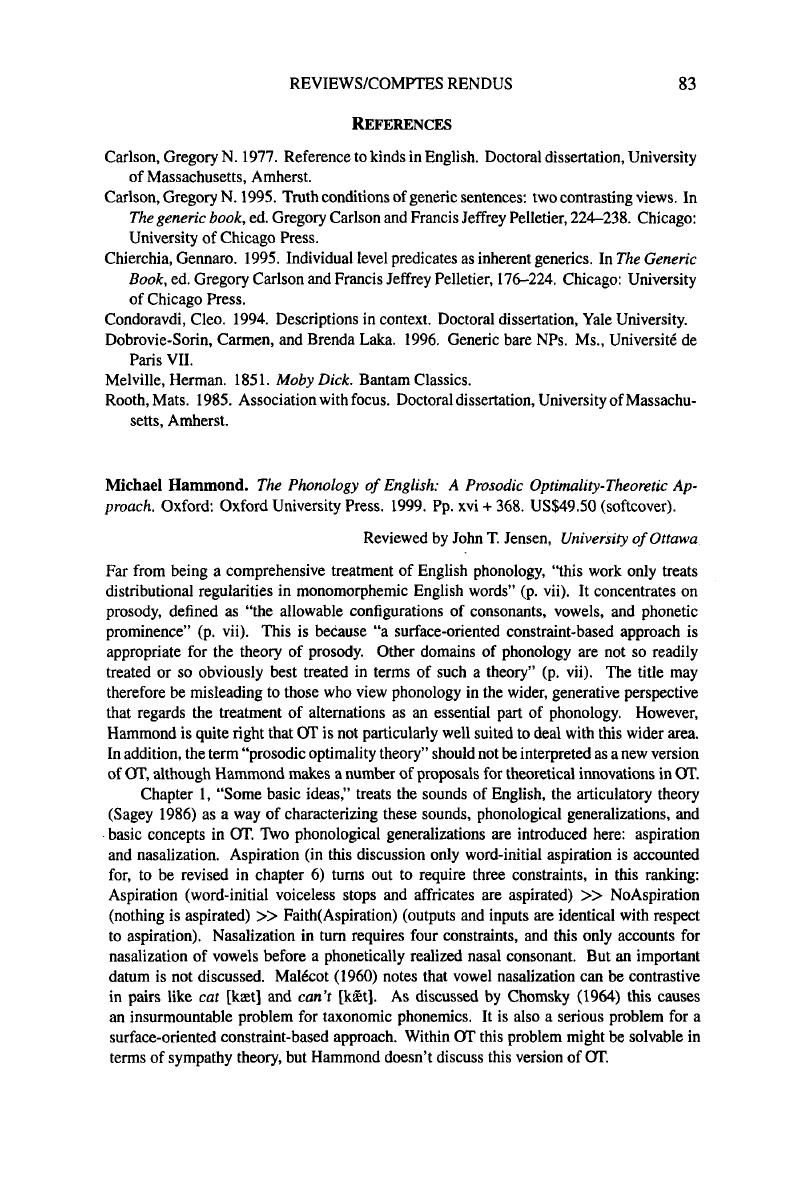No CrossRef data available.
Article contents
Michael Hammond. The Phonology of English: A Prosodic Optimality-Theoretic Approach. Oxford: Oxford University Press. 1999. Pp. xvi + 368. US$49.50 (softcover).
Published online by Cambridge University Press: 27 June 2016
Abstract
An abstract is not available for this content so a preview has been provided. Please use the Get access link above for information on how to access this content.

- Type
- Reviews/Comptes rendus
- Information
- Canadian Journal of Linguistics/Revue canadienne de linguistique , Volume 47 , Issue 1-2 , June 2002 , pp. 83 - 87
- Copyright
- Copyright © Canadian Linguistic Association 2002
References
Borowsky, Toni. 1986. Topics in the lexical phonology of English. Doctoral dissertation, University of Massachusetts, Amherst.Google Scholar
Borowsky, Toni, Itô, Junko, and Mester, Ralf-Armin. 1984. The formal representation of ambisyllabicity: Evidence from Danish. NELS
14:34–48.Google Scholar
Kahn, Daniel. 1976. Syllable-based generalizations in English phonology. Doctoral dissertation, Massachusetts Institute of Technology.Google Scholar
Kiparsky, Paul. 1979. Metrical structure assignment is cyclic. Linguistic Inquiry
10:421–441.Google Scholar
Malécot, André. 1960. Vowel nasality as a distinctive feature in American English. Language
36:222–229.Google Scholar
McCarthy, John J., and Prince, Alan S.. 1993. Generalized alignment. Yearbook of Morphology
1993:79–153.Google Scholar
McCarthy, John J., and Prince, Alan S.. 1995. Faithfulness and reduplicative identity. University of Massachusetts Occasional Papers in Linguistics 18: Papers in Optimality Theory, ed. Beekman, Jill, Dickey, Laura and Urbanczyk, Suzanne, 249–384. Graduate Linguistics Students Association, University of Massachusetts, Amherst.Google Scholar
Prince, Alan S., and Smolensky, Paul. 1993. Optimality theory: Constraint interaction in generative grammar. Ms., Rutgers University and University of Colorado, Boulder.Google Scholar
Sagey, Elizabeth Caroline. 1986. The representation of features and relations in nonlinear phonology. Doctoral dissertation, Massachusetts Institute of Technology.Google Scholar
Selkirk, Elisabeth O.
1982. The syllable. In The structure of phonological representations (Part II), ed. van der Hulst, Harry and Smith, Norval, 337–384. Dordrecht: Foris.Google Scholar
Withgott, Mary Margaret. 1982. Segmental evidence for phonological constituents. Doctoral dissertation, University of Texas, Austin.Google Scholar




